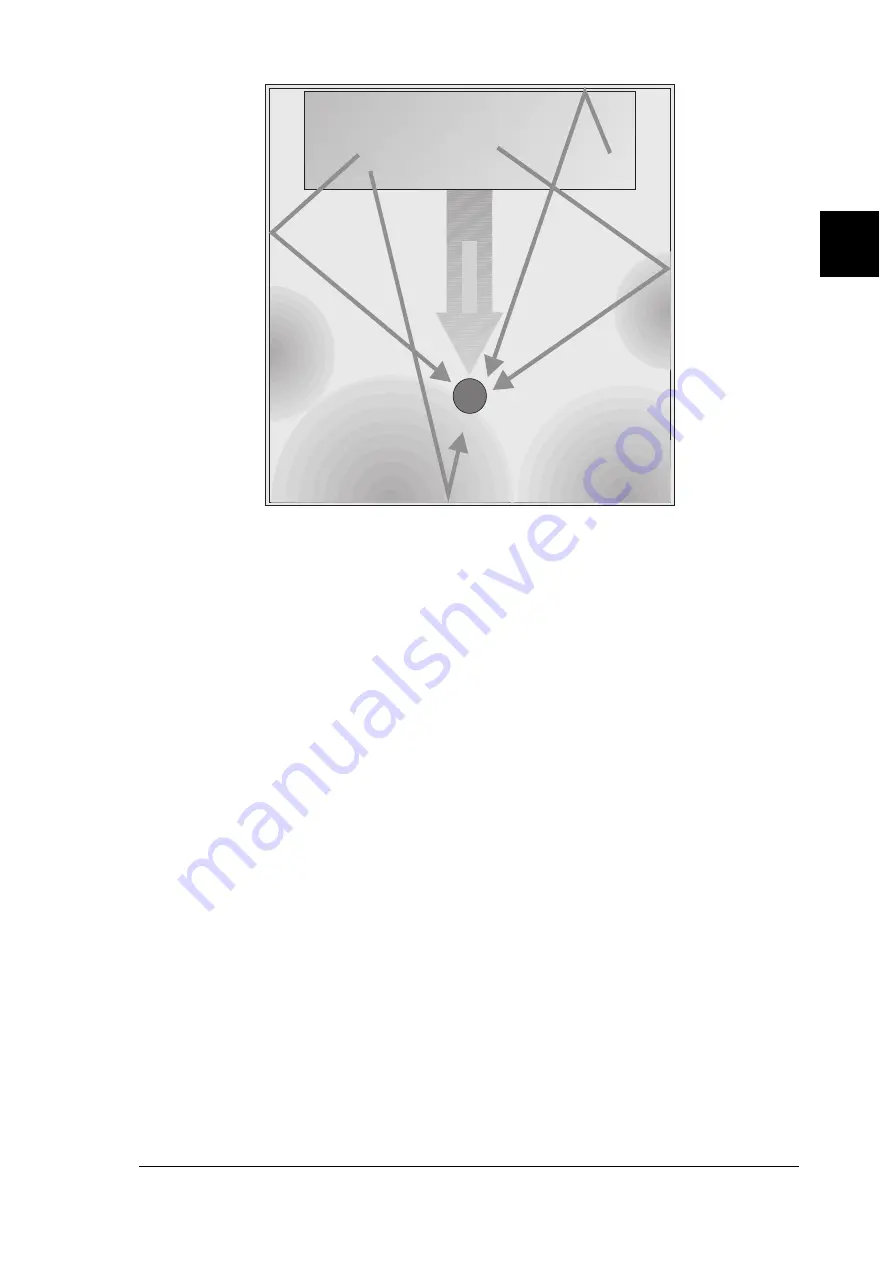
29
E
Stage
Listening Position
Direct Sound
Early Reflections
Early Reflections
Diffuse Reflections
Fig. 4.2: Direct and reflected sounds reaching the listeners ear.
Spatial information is an important means of orientation, because human hearing is also used to determine the
position of a sound source. In certain situations, this capability can be very useful or even of vital importance.
The fact that we can actually hear the size of a room shows how strongly developed the human sense of
hearing actually is. Based on the reflectivity of a room, we can also distinguish (though we often dont know
how) the materials it consists of. In large rooms with high tiled walls reverberation is generally very dense and
needs some time to decay, while a small room with many objects in it (furniture, carpets, etc.) features very
short reverberation often not even perceived as such. Nevertheless, this extremely short reverb does exist,
which is the reason why many designers of reverb devices (such as our VIRTUALIZER PRO ) implement
several basic reverb types and give them specific room names. It is quite natural, for example, that a reverb
preset called "Cathedral" produces a long and highly dense reverb, while a "Room" program usually represents
the acoustics of a room that is much smaller in size.
In addition to the capability of human hearing to determine the direction from where a sound phenomenon
arrives, we can also hear modulations of acoustic events. Of importance in this context is the frequency of the
modulated signals. Frequency modulations below 100 Hz are virtually inaudible. However frequency modula-
tions can clearly be heard when occurring in the midrange frequency band, due to the "sensitivity" of human
hearing. The ear immediately detects changes in midrange frequencies, while its sensitivity to frequency
modulation in the extreme low end of the frequency spectrum is reduced.
Frequency modulation can also be used to produce wanted effects. The popular chorus effect, for instance, is
basically the sum of a variety of frequency modulations. The original signal is slightly delayed in the chorus
algorithm, then added again and modulated by means of an oscillator. Subsequently, modulating frequencies
(of different pitch) are applied to the original signal, which produces the well-known floating chorus sound.
Basically, frequency modulation is the starting point for all kinds of chorus-type effects: by simply adding the
delayed signal, without modulating the original, you can produce a delay effect. Since chorus effects use very
short delay times, the resulting delay effect is not perceived as such. However, when you increase the delay
time, there is a clear gap between original and effect signals, and delay becomes audible.
4.3 Audio dynamics
By employing current modern analog technology it is possible to manufacture audio equipment with a dynamic
range of up to 130 dB. In contrast to analog techniques, the dynamic range of digital equipment is approxi-
mately 25 dB less. With conventional record and tape recorder technology, as well as broadcasting, this value
4. TECHNICAL BACKGROUND
All manuals and user guides at all-guides.com














































